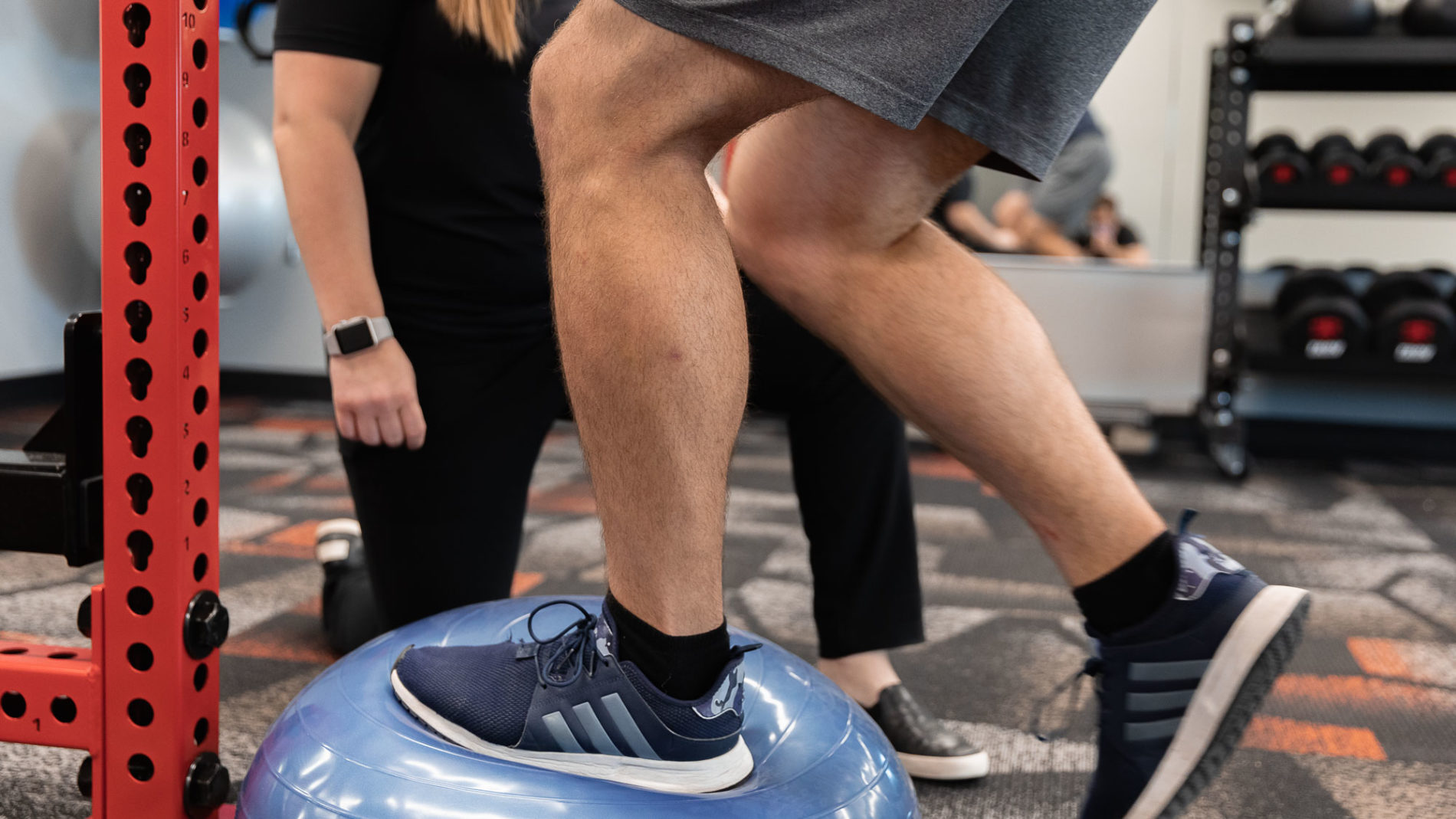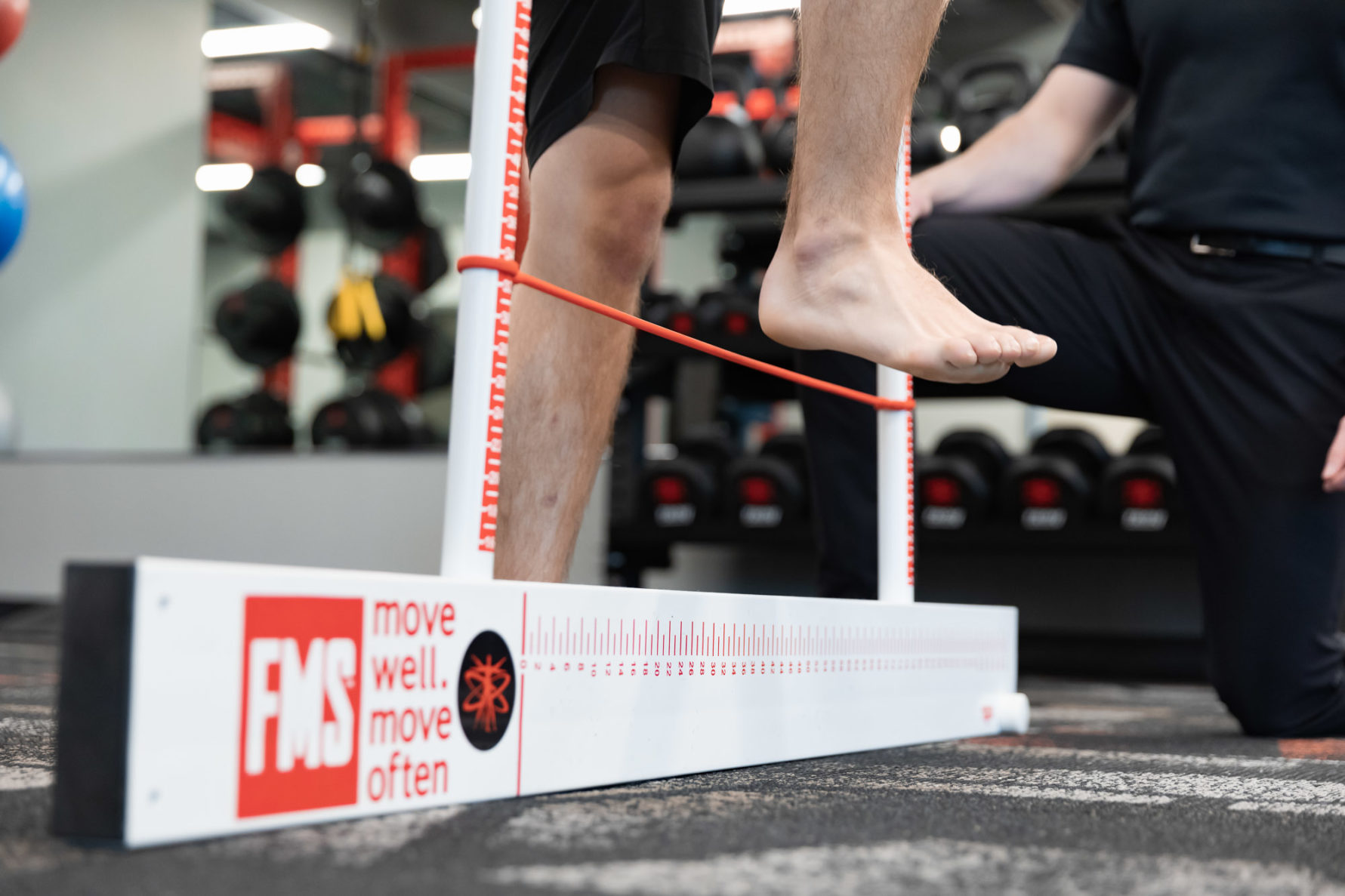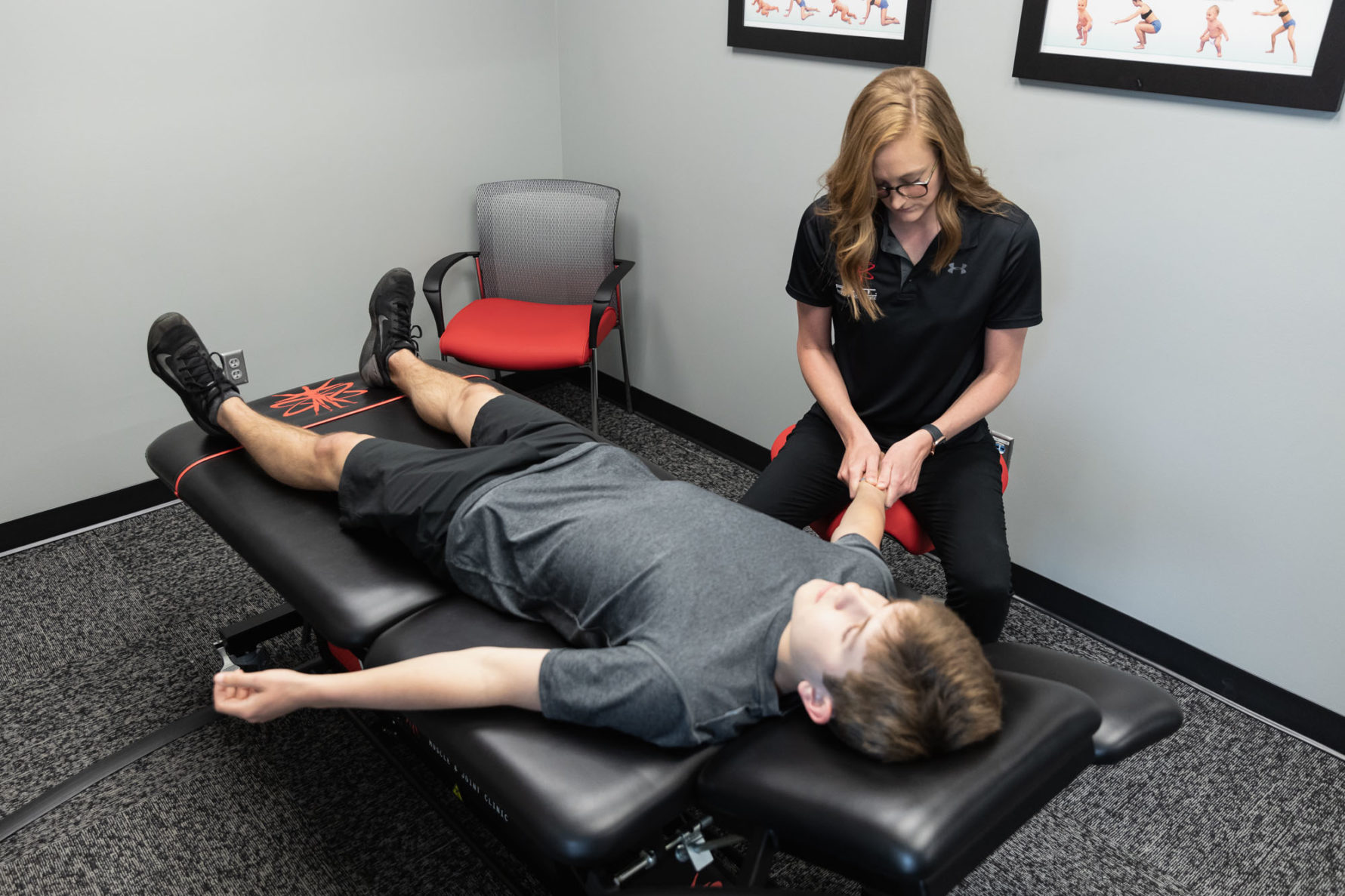How to Figure Out If You Have a Range of Motion Deficit | Kansas City Chiropractic Experts
01 January 2020 — Physical Therapy

It can be tough to go through life with joint and muscle pain. Daily activities such as reaching and stretching become difficult and frustrating. Without realizing it, these issues may stem from a range of motion deficit.
Many of our patients at F.I.T. Muscle & Joint Clinic ask our team of chiropractors and physical therapists, “how do I figure out if I have a limited range of motion?”
Read on to find the detailed answer along with everything you need to know about a range of motion deficit.
What is range of motion (ROM)?
Before we go any further, let’s take some time to understand exactly what range of motion is. You can’t figure out if you have a ROM issue if you have no idea what it even means.
At the most basic level, ROM describes the distance and direction a joint can move. This movement is measured using degrees of a circle. Different types of joints have different ranges of motion, but having the optimal range for each minimizes the risk of pain and stiffness.
Joint range of motion naturally decreases as our bodies age, so it’s important to stay as active as you can to slow down ROM degradation.
Learn more about the importance of mobility
Types of joints
Since all joints have different ranges of motion, it’s important to understand how each joint works. You may think you have a range of motion deficit, but in reality, that’s just how far that particular joint can move in the first place.
Below we’re going to focus on synovial joints (the joints in the body that allow for free movement). There are six different types of synovial joints.
Pivot joints
Pivot joints allow for rotational movement around a single axis. An example of this is the joint that connects your skull to your spine.
Hinge joints
Think of hinge joints like a door hinge, where movement is restricted to one direction. With hinge joints, you can only bend and straighten along a single plane. Examples include your elbows and knees.
Condyloid joints
Condyloid joints give you a wider range of movement, including bending and straightening, side-to-side motions, and circular movements. An example is the joints of your wrists.
Saddle joints
Saddle joints look like a rider on a saddle. These joints are very flexible and also allow for bending and straightening, side-to-side motions, and circular movements. The joint between your thumb and palm is a saddle joint.
Plane joints
Plane joints are bones that glide past each other. The bones involved are of similar size, and the surface is nearly flat where the bones meet. An example is the connection between your collarbone and shoulder blade.
Ball-and-socket joints
Ball-and-socket joints offer the widest range of movement. This includes bending and straightening, side-to-side motions, and circular & rotational movements. Your hips and shoulder joints are examples.
Factors that affect range of motion
There are different factors that could affect your ROM. Some are natural ways our body inhibits movements, while others are caused by outside forces.

Joint articulation
Joint articulation is the combination of how the bones, tendons, ligaments, and muscles surround a joint to allow movement. Joint articulation is what separates the types of joints. As stated above, some joints have a more restricted movement than others.
Excess fat or extreme muscle mass
Wherever you have more fat or muscle than normal against your joints, you may lose some of the range of motion you once had. That’s because the extra mass can block your path of movement.
Body asymmetry
Often times, we lean toward one side of our body to do work. For example, if you’re right handed, you may only use your right hand to do daily activities such as cleaning, eating, and writing. That leaves the other side of your body to become more stiff, which can limit your ROM.
Lack of flexibility
If you’re not the type of person to stretch often, or you just don’t stretch at all, you may find that your joints can’t move as much as they should. That’s because our muscle flexibility is an important part of joint motion.
Sedentary Lifestyle
Your body has to stay active to maintain an optimum range of motion. When you don’t move around, your joints and muscles stiffen, making it harder for you to move the same way you did before. Plus, your bones could lose mineral content, which may lead to osteoarthritis later on.
ROM and flexibility
Flexibility and your range of motion go hand in hand. Keep in mind that the two terms aren’t the same, though some may people may use them interchangeability. Flexibility is the ability of a muscle to stretch, while your range of motion is how far your joints can move.
Without proper flexibility, you won’t have the optimum range of motion for your joints. Sometimes we can solve a range of motion deficit by simply enhancing your flexibility. We accomplish this through a range of stretches and exercises designed to lengthen and stretch your muscles.
How range of motion is measured
The best way to understand a range of motion deficit is by measuring how a joint moves. This is done using a tool called a goniometer, though tape measures are sometimes used as well.
Goniometers are comprised of two arms (one stationary and one movable) and an axis. The body of the goniometer has a measuring scale, which measures the angle between the start and end positions of different movements.
What causes a range of motion deficit?
Outside of natural causes, there are certain medical conditions that could cause limited ROM. These are diagnosed by a doctor who may then recommend physical therapy for rehabilitation. These conditions include:
- Ankylosing spondylitis: a condition that mainly affects the spine
- Osteoarthritis: a common form of arthritis in older adults
- Rheumatoid arthritis: an autoimmune type of arthritis where the body attacks your joints
- Juvenile rheumatoid arthritis: rheumatoid arthritis that affects children
- Cerebral palsy: neurological disorders that cause muscle paralysis and loss of body control
- Other non-specific medical conditions include:
- Joint swelling
- Inflammation of soft tissue around the joint
- Joint dislocation
- Fractures
- Muscle stiffness
- General pain
When to seek help for range of motion in Kansas City

You can go to a chiropractor or physical therapist any time you have questions about your range of motion, even if you’re unsure about whether or not you have a deficit. At F.I.T. Muscle & Joint Clinic, we believe in being proactive about patient issues rather than waiting until it gets worse. If you have joint or muscle pain that limits your range of motion, we highly recommend seeking a chiropractor in Kansas City.
A medical professional will be able to examine your joint movement, including performing a variety of tests and measurements to diagnose a ROM deficit.
How to improve a range of motion deficit
It’s one thing to figure out if you have a range of motion deficit; it’s another thing to actually try to improve it. Many people will brush it off as no big deal, only to find that later on, the deficit gets bigger or becomes more permanent.
There are three types of exercises that can help improve patients’ limited range of motion.
Active exercises
Active exercises are movements you can do on your own to improve limited ROM. For these, you won’t need any outside aid to help you.
Active-assisted exercises
Active-assisted exercises are a team effort between you and a physical therapist. This is great if you have pain trying to do certain movements on your own.
Passive exercises
Passive exercises rely solely on the physical therapist for movement. If you’re completely unable to move a joint you’d want a medical professional to assist you. This works for people who suffer from major injuries or are recovering from surgery.
Best ways to return to the gym with a limited ROM

Just because you have a range of motion deficit, doesn’t mean you can’t go to the gym and fulfill that New Year’s Resolution. In fact, we recommend maintaining an active lifestyle to continue improving your ROM.
We understand it may be scary to hit the gym again, but it’s definitely worth it in the end. Here are a few ways to get started.
Start slow. There’s no need to try to overexert yourself. Give yourself time to ease into working out again, even if that means working out for 10 to 15 minutes per session.
Don’t forget to stretch. Make sure you stretch after your warmup and when you’re ready to cool down. That will help increase your flexibility and reduce the chance of injury.
Avoid your injured area. If you have an injury, you’ll first want to make sure you’re cleared by your doctor to work out again. Once gym time is on the table again, avoid straining the injury and instead start by working around it.
Stop when you feel pain. Some fatigue and pain will be normal depending on what you’re doing. If the pain feels unnatural or unbearable, stop. The last thing you want to do is hurt yourself.
Stay positive. Don’t focus on what you can’t do. That will only leave you upset and frustrated. Instead, acknowledge how far you’ve come and the things you can do.
Read to learn what to eat after your workout
Need help with a range of motion deficit in Kansas City?
F.I.T. Muscle & Joint Clinic is here to help. Our highly trained chiropractors and physical therapists value taking time with each one of our patients to ensure that their bodies are moving as best as they can.
Our goal is to maximize your overall movements to get you back to doing what you love, without discomfort. We offer a variety of rehabilitation exercises in Kansas City to help you improve your range of motion.
Contact us today to learn more about our services or schedule an appointment to get started.
Contact us Schedule an appointment



